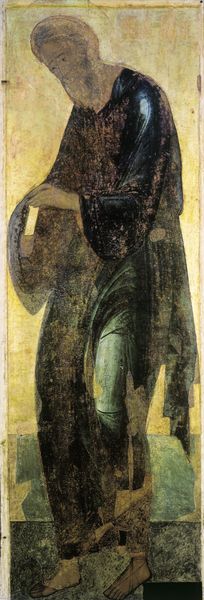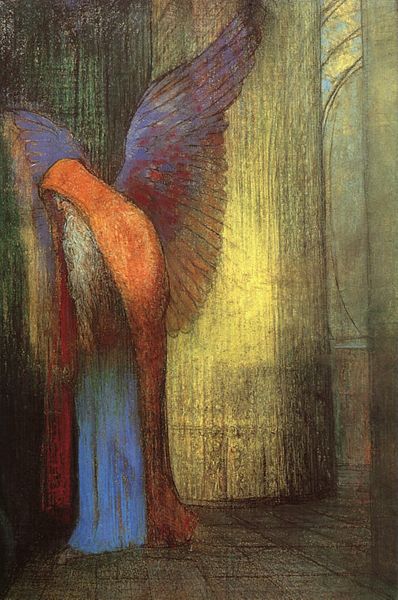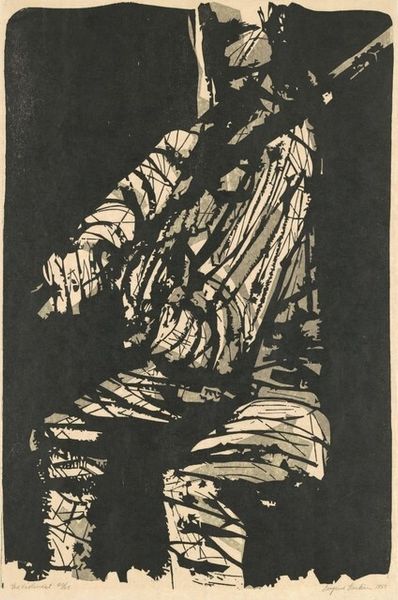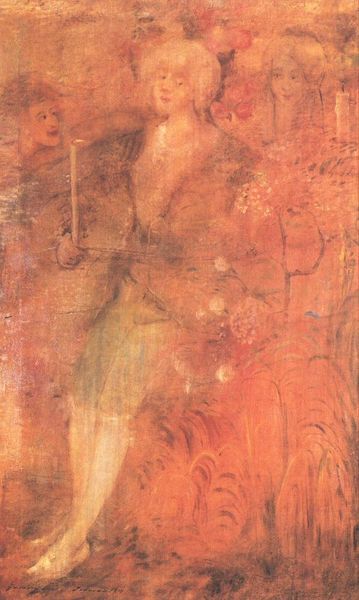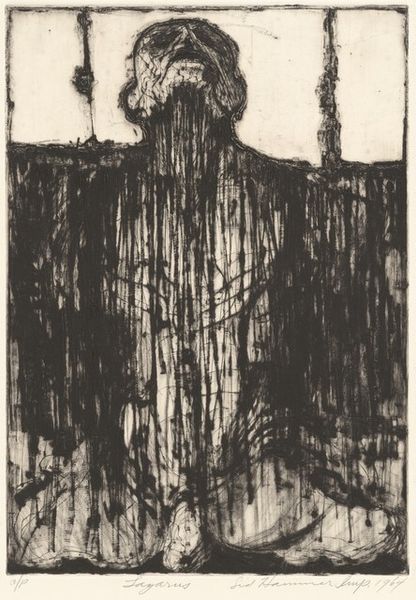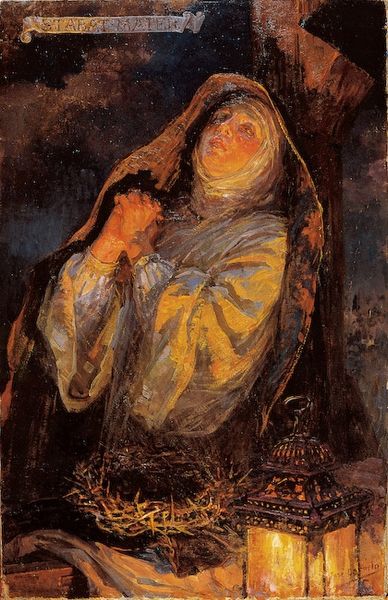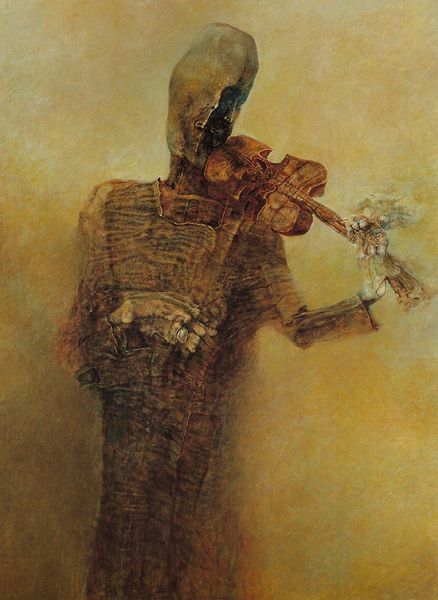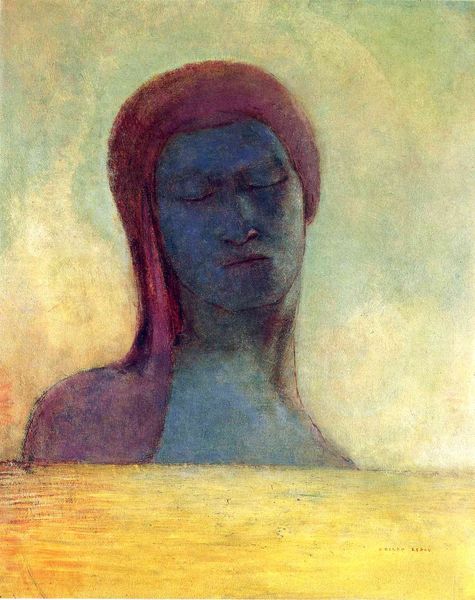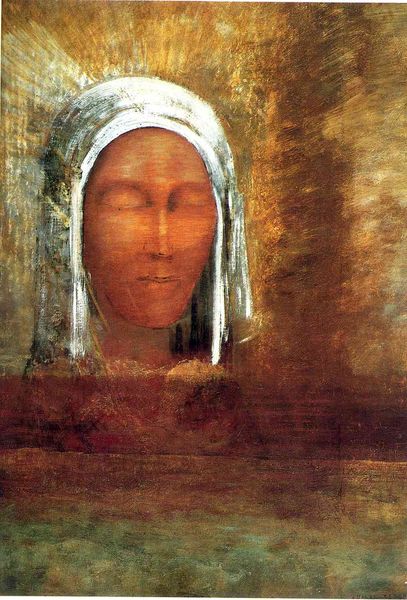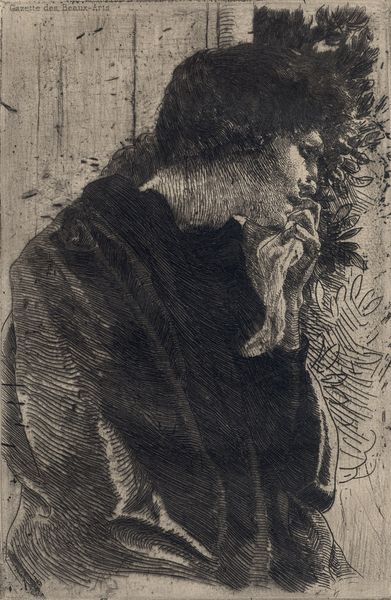
Copyright: Public domain
Curator: This work by Vajda Lajos, created in 1936, presents us with an unsettling "Self-Portrait." What strikes you first about this piece? Editor: The sheer intensity. The grainy texture created through graphite and charcoal almost vibrates. It's unsettling yet undeniably captivating. There's a raw, almost primal energy emanating from the composition, with the overlaid ghostly features of the face. Curator: Absolutely. The overlapping facial features and even the faint halo can represent the multi-layered self, reflecting various states of mind or even past selves haunting the present. Editor: I agree to the layering effect. It contributes to the work's dynamic character, with its superimposed, shifting, elusive elements. This layering evokes simultaneity and a dissolution of conventional portraiture. Curator: The symbolism extends to the hand gesture as well, resembling a blessing, though the skeletal rendering twists that conventional sign of grace into something more ambivalent, maybe a recognition or acknowledgement. What could this refer to? Editor: It destabilizes the easy reading of religious iconography; that contrast and inversion introduces another layer of complexity, perhaps a subversion of faith itself, or a search for an alternative spiritual expression beyond the scope of religion. The stark, pale orbs where the eyes should be give a sensation of intense hollowness, intensifying the portrait's aura. Curator: Vajda lived through immense social and political turmoil. Consider that the use of charcoal and graphite themselves ties the image back to an earlier time when many used such to document the world. Editor: You're right. We see that history imprinted within it as it looks at the modernist turn, expressing how an inherited world view affects identity as his life changed due to the events surrounding WWII. Its grainy surface captures and reinterprets Modernist techniques, and reflects history. It makes you reconsider your own understanding of Modernism, because here is an artist actively showing history, memory, identity and change with it. Curator: Thinking of the artist’s place in this turbulent period definitely provides another vantage point to analyze its elements and cultural impact. Thank you for sharing that with me. Editor: Thank you, I agree it is very insightful. Analyzing the symbols reveals a deeper understanding and appreciation of the piece, showcasing a unique viewpoint to consider.
Comments
No comments
Be the first to comment and join the conversation on the ultimate creative platform.
